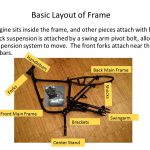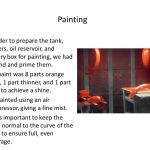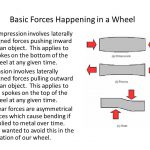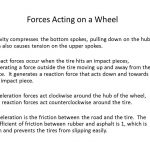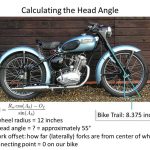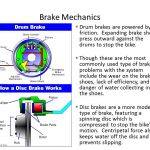Science to keep in mind:
Frame and Forks:
- Turning v. banking. If a rider attempts to turn the handlebars too drastically at too high a velocity, the motorcycle will skid and possibly flip in the opposite direction. In order to counteract this, the rider should bank the motorcycle (that is, they should lean the entire bike) in the same direction the motorcycle is turning.
- The purpose of ball bearings. Ball bearings are used to minimize friction between pieces of metal that need to rotate alongside each other with minimal friction. The greased bearings provide a smooth, more efficient movement for the handlebars. The bearing system is also seen the axle of the wheels.
- Spring constants. The shock absorbers in the rear, as well as the hydraulic shocks in the front forks provide a mechanism that lessens impact of outside forcer that affect the motorcycle before they reach the rider. Heavy duty springs are used for these shock absorbers, and the higher the spring constant, the better they will neutralize the impact force.
Wheels:
- Torque and slippage. There is a limit to the amount of torque that can be placed on a wheel, as the friction constant will at some point be overcome, and the wheels will fail to connect firmly with the ground. On our bike, this amount of torque is about 200 foot-pounds, as the radius of our wheel is about one foot, and the evenly distributed weight of the bike and rider total approximately 400 pounds, distributed between two wheels.
- Friction and braking. The drum brakes operate using friction, pressing the brake shoes outward against the drums, or the metal part of the wheel. The friction is supposed to slow, and eventually stop the motion of the wheel, and therefore the motion of the motorcycle.
- Forces of tension and compression. The forces of tension and compression greatly affect the spokes of a wheel. Each spoke will feel either tension when on the top half of a rotating wheel, or compression when located on the bottom half of a rotating wheel. These counterbalancing forces keep the metal from being warped. These two forces are also seen in the brake system, with the expanding cams placing tension on return springs and the return springs compressing the cams.


